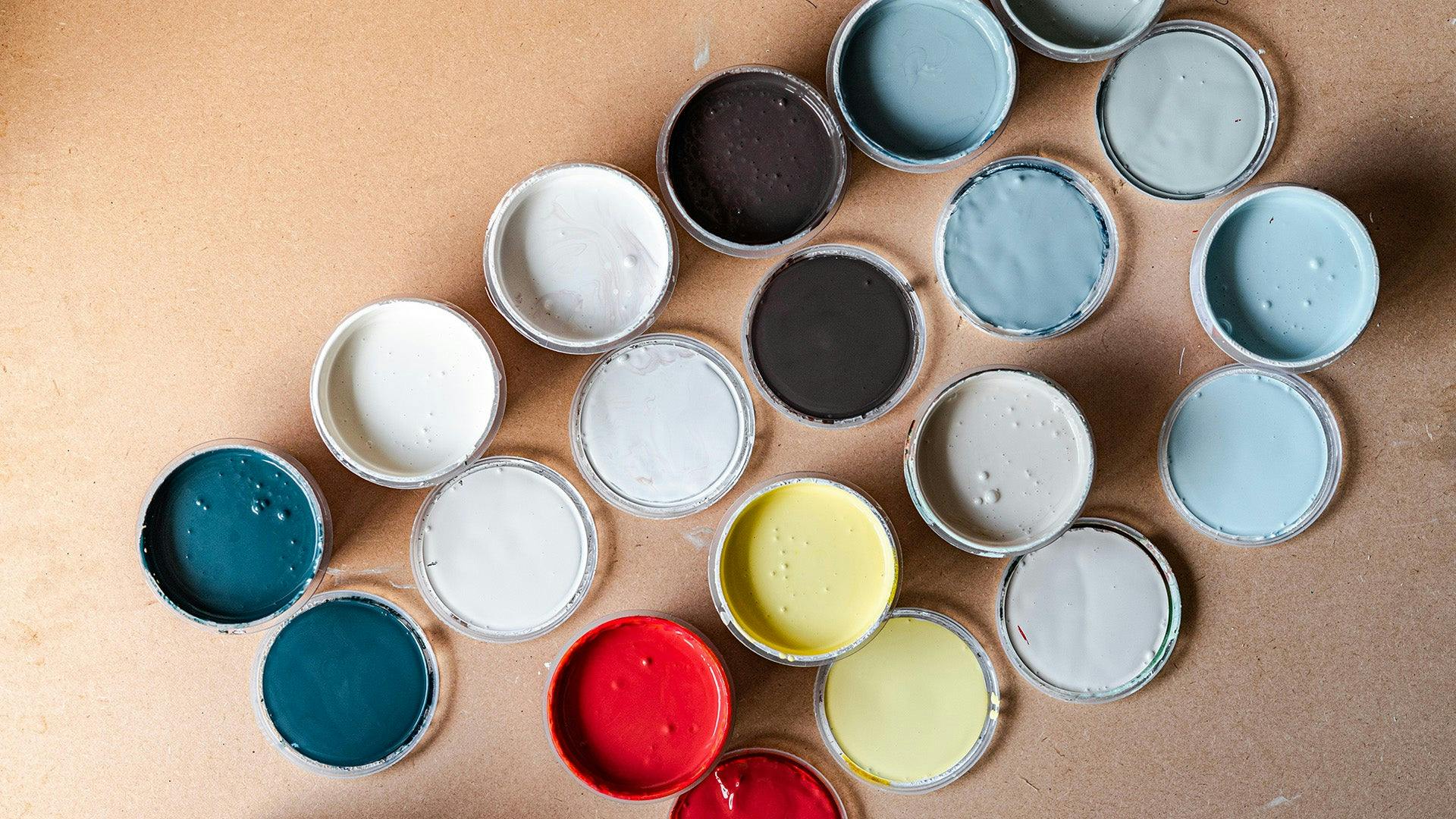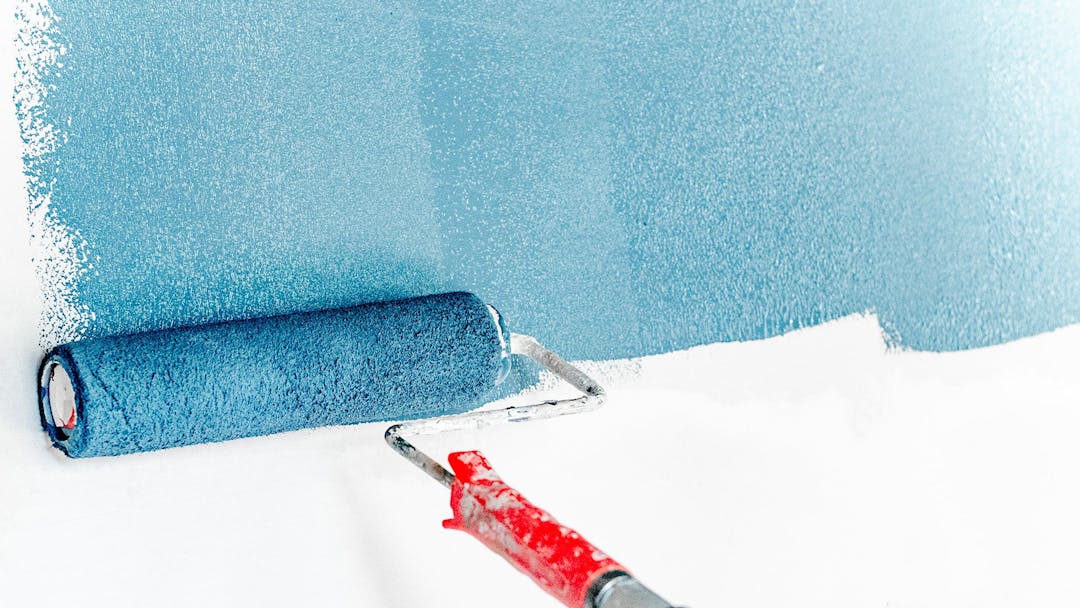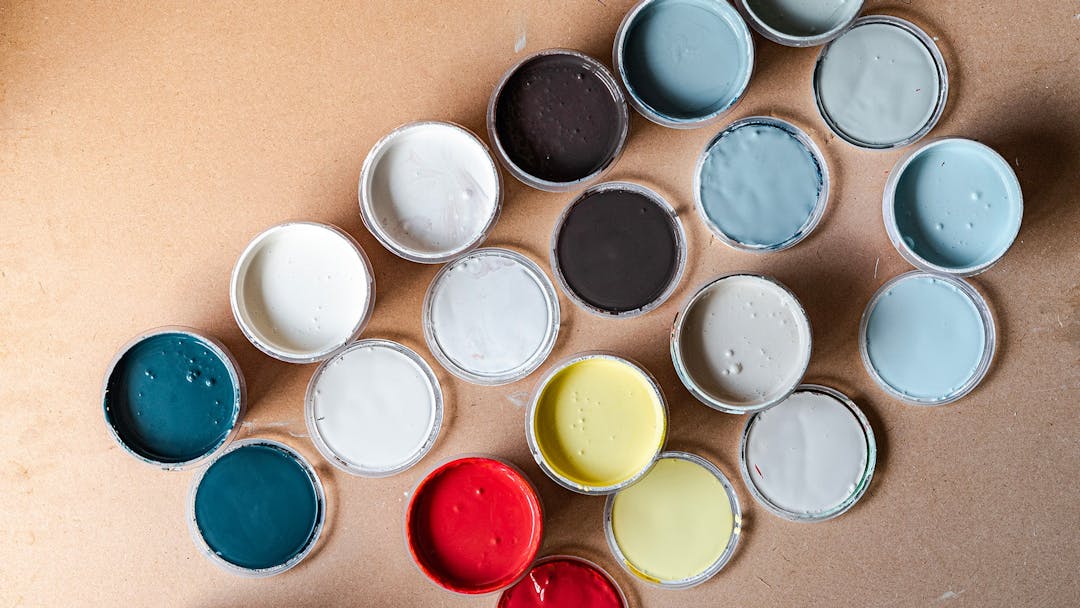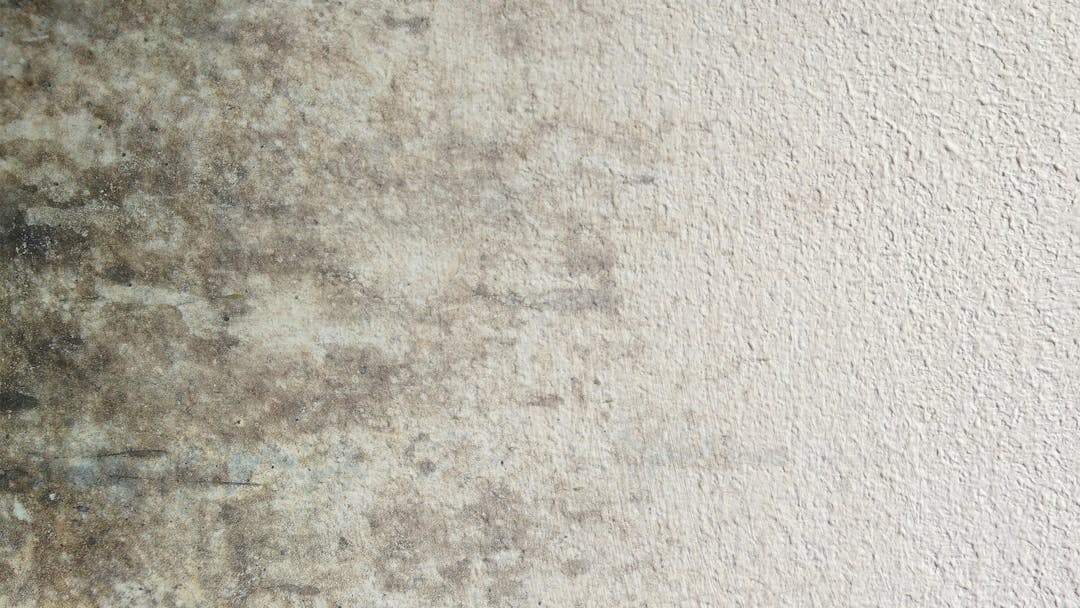Acrylic colours are one of the most versatile and popular choices in the painting world. These water-based pigments offer a wide range of artistic possibilities, guaranteeing brilliant, long-lasting results. But what makes them so popular?
In this article, we will explore the characteristics of acrylic colours and delve into different techniques to make the best use of them.
If you want to paint with acrylic colours, read on for tips that will help you with your art or DIY projects.
How do I paint with acrylic paints?
To start painting with acrylic paints, follow these basic steps:
- Prepare your materials, gather the desired acrylic colours, brushes of various sizes and shapes (narrow, wide, flat, round, pointed), a palette (or a plastic saucer), a container for water and the medium to be painted (such as a canvas, a sheet of paper, an object).
- Choose one application technique or mix more than one. You can paint with broad, bold brush strokes, splatter like the action painting school or use more detailed techniques such as pointillism.
- Thin the colours if necessary. Thinning allows you to achieve finer shades and a more translucent appearance.
- Start painting using the most suitable brushes to apply colours and create the shapes you want. For example, you will need to use a flat brush to define the corners of a square or one with a fine tip to create fine details.
- Make sure to let each layer dry completely before applying a new one or doing any touch-ups. Remember that acrylics dry quickly, especially when applied in thin layers.
What is the thinner for acrylic colours?
To thin acrylic colours you can use either water or acrylic specific mediums.
Water is the most common and economical thinner, and is suitable for creating thinner, more transparent shades. Simply add small amounts of water to the colours on the palette and mix until the desired consistency is achieved.
However, acrylic mediums offer a greater variety of effects and consistencies. You can choose products that increase the transparency, opacity or brilliance of colours, and others that prolong the working time, allowing you to better manipulate the paint. You can buy acrylic paint mediums at specialised fine arts shops.
How to dilute acrylic colours with water?
Diluting acrylic colours with water is a relatively simple process. Here are the steps to follow:
- Prepare the colours on the palette by placing a small amount of each colour you wish to use. Space them out if you don't want them to mix to create a new colour.
- Add water a little at a time using a dropper or a clean brush. Start with a few drops and gradually add until you reach the desired consistency.
- Mix the colour and water well with a clean brush until an even consistency is achieved. Make sure to mix well to avoid lumps or streaks.
- Clean the brush you used for mixing before you start painting. Dump the colour on the palette or use a piece of paper to clean the bristles, so you can better manage the application of the paint and not create build-up on the canvas.
- Test the consistency by painting a small test area. If necessary, you can add additional drops of water or paint to achieve the desired result.
What happens if you don't thin the paint?
If you do not thin the acrylic paint correctly, some problems may occur. The paint may be too thick and difficult to work with or spread on the surface. In addition, it may be difficult to achieve desired shading or transparency.
Lack of dilution may also make it difficult to mix colours and create more delicate shades.
In addition, unthinned acrylic paint may dry faster than expected on the palette or support, making it difficult to work with the colours.
If you prefer to work with acrylic paint without thinning it, taking it with the brush as it is fresh out of the package, you can do so. This will allow you to achieve denser, more opaque brush strokes on your surface.
So, to avoid problems, it is important to dilute acrylic paint correctly to achieve the right consistency for your artistic needs.
How not to dry acrylic colours
As mentioned earlier, acrylic colours tend to dry quickly, so it is important to take some precautions to prevent them from drying out prematurely:
- Make sure to carefully close the containers of acrylic colours after use. This will prevent air from entering and help preserve the freshness of the colours.
- Avoid exposing acrylic colours to direct sunlight or high temperatures. Heat and sunlight can accelerate the drying process of the colour.
- Try to store your acrylic colours in a cool, dry place.
- Use wet palettes, tools specially designed to keep acrylic colours moist.
- Use sprayers to spray water on the surface of the colours to keep the consistency moist and workable for a little longer.
- Try to use your acrylic colours regularly to keep them fresh and fluid.
By following these tips, you can preserve your acrylic colours and keep them usable for a longer period of time, preventing them from drying out.
How to make acrylic colours opaque
If you want to achieve an opaque effect, as well as choosing an acrylic paint made to have this characteristic, you can use two simple techniques.
Add an acrylic matting medium, which is a product specifically designed to make acrylic paint more opaque.
Or, you can apply a matt base coat before applying the acrylic paints. Applying a matt primer to the surface will give you a perfect base to work with and get the result you want.
What you can paint with acrylic paints
Vernice high-quality acrylic paints allow you to explore different artistic techniques and paint on a variety of materials: canvas, paper, cardboard, wood, iron, plasterboard and wall.
You can choose colours from a wide palette and use them both to create beautiful paintings and to decorate objects with artistic techniques. Experiment, be inspired and enjoy the creative process as you turn your ideas into unique works.
If you want to paint with acrylics, choose the 100ml size of VERNICE.




